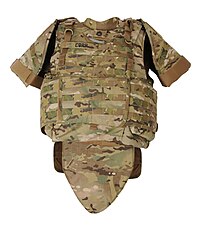
Photo from wikipedia
Abstract Ultra-high performance concrete (UHPC) shows volumetric instability at high temperatures because of explosive spalling. Polypropylene (PP) fibers are effective in mitigating the explosive spalling of UHPC; however, the threshold… Click to show full abstract
Abstract Ultra-high performance concrete (UHPC) shows volumetric instability at high temperatures because of explosive spalling. Polypropylene (PP) fibers are effective in mitigating the explosive spalling of UHPC; however, the threshold PP fiber dosage to prevent explosive spalling of UHPC remains unascertained. In this work, a knowledge-enhanced data-driven machine learning method is proposed to quantify the effectiveness of PP fibers in preventing fire-induced spalling of UHPC. Based on the knowledge-enhanced technique, the training data size is increased from 244 to 1642. The prediction accuracy of the artificial neural network (ANN) and extreme gradient boosting (XGBoost) models on 54 groups of unseen data is increased by more than 10% after the training data augment. The well-validated ANN model is then used to determine the threshold PP fiber dosage of UHPC tunnel lining under hydrocarbon fire conditions. The analysis results show that as high as 3.5 kg/m3 PP fibers are required to eliminate explosive spalling of UHPC, but this critical dosage can be lowered to 2.5 kg/m3 by limiting the silica fume replacement level.
Journal Title: Construction and Building Materials
Year Published: 2021
Link to full text (if available)
Share on Social Media: Sign Up to like & get
recommendations!